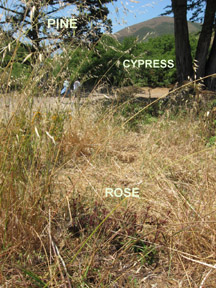LEED for landscape, site, and garden No. 2
Sustainable Sites Credit 3 Brownfield Redevelopment has the Intent: “Rehabilitate damaged sites where development is complicated by real or perceived environmental contamination, reducing pressure on undeveloped land.”
The Requirements for this credit are pretty simply stated, that is, to develop on a site identified as contaminated or classified as brownfield and effectively remediate site contamination.
What are the implications for landscape, site, and garden?
Every municipality and state or province has disturbed lands that are obsolete or abandoned landfills, industrial mills or factories, quarries or mines, power-generation plants, military bases, airports, ports, or even residential and retail storage of petroleum and chemical products. Technical remediation would be necessary, of course, to cleanse them for further human use.
In addition, however, the very character of any new development that to be built in these old disturbed sites will almost certainly be affected by the toxic history of the place – whether the development is residential, commercial, industrial, recreation, park, or passive open space. Many landfills today are sealed and turned into parks with only the occasional vent to remind conscious visitors of the seething or at least unsettled materials 18” below them. However, nineteenth century parks were typically intended to create psychological therapeutic effects through opening up natural areas – not old dumps – and scenery and creating opportunity for social interaction. What kind of restorative experience can you have on a pleasant Sunday afternoon with your wife /husband, two kids, and your dog picnicking and throwing a Frisbee around on an old landfill?
To effectively address the nature of such places the design must treat the history of disturbance as one of the sources of inspiration for the landscape, site, and garden design, along with user requirements. A strange beauty can result that would otherwise never appear, a beauty that nevertheless connects us with our cultural history and grounds us in the moment and place.
...“designers of disturbed sites (must) recognize that simply cleaning a site is not enough. Creating beauty – out of the strange, particular character found on contaminated industrial sites – is the first step in the process of environmental recentering. The challenge for designers of disturbed sites is… that the beauty that recenters, destabilizes, and moves us to care about “the other” – the beauty that has agency – is not generic or familiar. It is always particular.”
Elizabeth Meyer, “Uncertain Parks” in Czerniak and Hargreaves eds. Large Parks 2007.
Posted by geoffreykatz
at 2:10 PM PDT
Updated: Thursday, 4 June 2009 2:18 PM PDT



 by – so this particular area had some use a hundred or more years ago and perhaps right up to the time it became part of the Golden Gate National Recreation Area.
by – so this particular area had some use a hundred or more years ago and perhaps right up to the time it became part of the Golden Gate National Recreation Area.